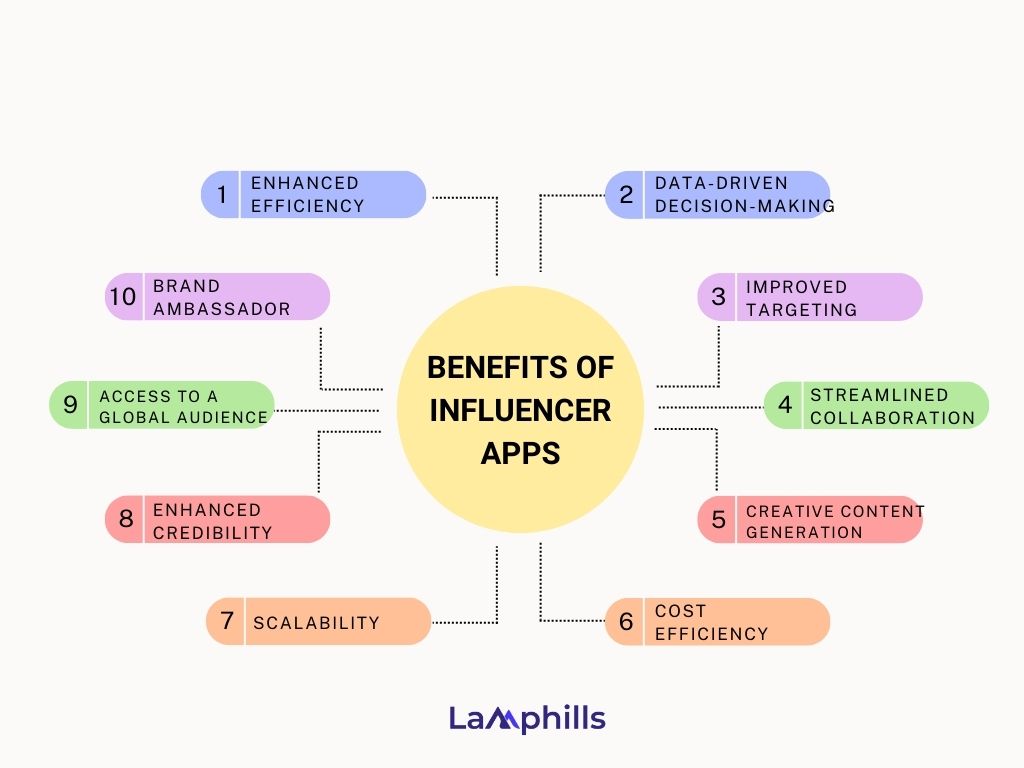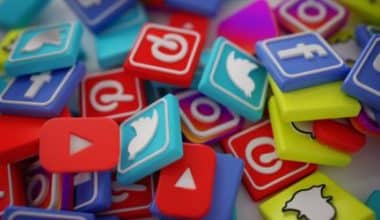One of the challenges most brands face is finding the right influencer for their campaign. Influencers on the other end also have difficulties landing high-paying gigs as the pool of talented creators keeps growing by the day. This is where influencer apps come in.
If you’re an influencer or want to monetize your influence, influencer apps can conveniently help you get hooked up to brands for collaborations. They are a unique niche and, unlike marketing tools, they focus more on the influencer rather than the marketer experience.
Key Takeaways
- Influencers create and share content regularly to establish their expertise and work to build relationships with their followers.
- The rise of social media has given birth to different types of influencers.
- Being an influencer comes with several benefits, like doing what you love and choosing your hours.
- It also has certain drawbacks, the biggest of which is creating a following.
- Influencer apps help bridge the gap between marketers looking for influencers, and influencers looking for gigs.
- Influencer apps have become invaluable tools for marketers and influencers alike, offering a wide array of benefits that can help improve your marketing strategy.
Who Is An Influencer?
An influencer is someone in your niche or industry with sway over your target audience.
Influencers have specialized knowledge, authority, or insight into a specific subject. Their pre-existing presence in a niche makes them a useful launching pad for brands in search of credibility. 85% of marketers engaged in influencer marketing in 2017 and 92% said their campaigns were effective.
Influencers create and share content regularly to establish their expertise and work to build relationships with their followers. By regularly engaging with their audience and offering insightful content, creators can often “influence” their followers to try a particular product.
An influencer assists companies in influencer marketing a form of advertising that builds brand authority on the back of another person’s reputation. Brands partner with influencers for product or service promotion, allowing them to effectively reach their target audience or build brand awareness among people unfamiliar with what they offer. Since followers trust an influencer, they see these product endorsements as a recommendation from a friend rather than a sales pitch.
Collaboration can result in compensation or free products as the influencer tries to influence the audience to make a purchase.
Types of Influencers
Influencers have a long history in marketing. Initially, companies used compelling figures like celebrities and athletes to help sell their products through television and radio ads. The rise of social media has made other types of influencers more popular. Today, influencers fit into the following categories:
- Celebrities: Artists, athletes, and pop culture stars.
- Industry experts and thought leaders
- Micro-influencers: Individuals with an impact on social media
- Bloggers and content creators
The bulk of influencer marketing today occurs in social media. Micro-influencers and bloggers are a more cost-effective way to access instant credibility for growing brands.
Social media influencers, on the other hand, typically fall into tiers based on their audience size. Common tiers include the following five categories:
- Mega influencers: One million+ followers
- Macro influencers: 500,000 to one million
- Mid-tier influencers: 50,000 to 500,000 followers
- Micro-influencers: 10,000 to 50,000 followers
- Nano influencers: Zero to 10,000 followers
How to become an influencer
Pros of Being an Influencer
Influencers get to work with their favorite brands and endorse products they love. Compensation, free gifts, and invitations to events are part of an influencer’s appeal, but they also get to set their own schedules, declare their own pricing, and control the content they create.
Let’s take a closer look at the pros of being an influencer:
#1. Remote work
As an influencer, you can work anywhere, be it your home, local library, or even on a plane. You choose your hours, which means you decide when to create content and how to schedule other tasks like pitching brands, brainstorming ideas, or networking with other influencers.
#2. PR packages
Influencers can set their rates, usually using one of several different types of pricing. You may charge per piece of content, package, or bundle. A PR package includes a bundle of content, which usually contains posts for different channels and can be effective in helping boost your income and increase your exposure on multiple social platforms.
#3. Control over content
Influencers create content that they’re passionate about. You have control over the content shared with your audience of like-minded people. In doing so, you create a community.
Even if you have brand deals and work closely with that brand, you will often have a good deal of creative control. While brands provide direction and collaborate with an influencer, influencers create authentic content that resonates with their audience when they lean on their expertise and knowledge of their audience to socially endorse a brand or product.
Cons of Being an Influencer
Cons exist, too. For example, influencers often experience inconsistencies in available work and can become frustrated by the amount of time needed to build an audience from scratch. Other drawbacks include:
#1. Inconsistent work
Creating a steady income stream as an influencer is a challenge. Influencers work hard to pitch brands and find brand deals that offer compensation. Paid projects can be inconsistent, which means income can be sporadic.
#2. Building a community takes time and effort
To earn money as an influencer, you need an audience. To build an audience, you need patience. It takes time to identify your niche, create content, and grow an audience big enough to attract brand partnerships.
Influencer Apps For You To Check Out
Now, I might not be an influencer, but I have worked with them; marketers and influencers are practically siblings, after all. This has given me a sneak peek into the world of influencing to see what goes on behind the curtain, most especially, how to find influencers.
As mentioned above, influencer apps help bridge the gap between marketers looking for influencers, and influencers looking for gigs. So, if you are a marketer looking for influencers to scale your brand or an influencer looking for platforms that can connect you to your favorite brands, here are over 10 of the top apps you should check out.
#1. Indahash
Indahash is an international influencer marketing platform where brands connect with influencers worldwide. So far, IndaHash has linked over 1,000,000 influencers and more than 500 companies in 80 countries. It focuses mainly on three social media platforms: Facebook, Instagram, and Snapchat.
To be an influencer on IndaHash, you must meet specific requirements—some are as follows:
- A minimum of 5,000 followers on any social media platform you work with
- At least 40 high-quality pieces of content posted on your page
- Your audience must be authentic (no paid followers)
- Your engagement rate must be high
#2. IZEA
IZEA is an influencer and content marketing platform that started before the influencer marketing industry came into the spotlight. They help brands connect with the right influencer to scale their influencer marketing campaign.
Influencers on IZEA have the opportunity to connect with the biggest brands in their industry. You can easily create a free profile with a few easy-to-follow steps.
However, IZEA is more than just a third party between the influencer and the brands. Its excellent services, born from years of experience, make it unique. It offers all the tools and services you will need in an influencer marketplace, such as finding social media influencers, collaboration, payments, distribution, and campaign management.
When it comes to complexity, IZEA might be a slightly complex software to use, but you can find your way around easily with time. As a brand, all you need to do is sign up for an account, choose your preferred monthly subscription, which starts from $149, and search for influencers related to your industry. Influencers who are interested in your campaign will then send you a proposal.
IZEA also has a fantastic feature called ContentMine, which stores all the content created in your last campaign.
#3. Octoly
Octoly is one of the best influencer apps that has connected more than 300 brands with over 40,000 influencers in various niches, including beauty, lifestyle, and fashion and wellness. This app is simple to use, and contacting the customer care staff is fast and hassle-free.
Octoly operates only on YouTube, Instagram, and TikTok, with specific requirements for each social media platform.
✔️ For Instagram
- You need to have at least 1,000 followers
- Post relevant content consistently
- Have at least 30 posts and an engagement rate of 2%
✔ ️For YouTube
- Influencers need to have at least 1,000 subscribers
- Consistently post relevant content
- A minimum average of 2,000 watch hours for the last five videos posted
✔ ️For TikTok
- At least 1,000 followers
- Post relevant content consistently
- Have a minimum of 500 average views per post, and have an engagement rate of 2%
#4. Influenster
How would you like to get rewarded for reviewing your favorite products? Influenster is a consumer forum where everyday people try and review products, so you can also learn about new things. If you are a successful reviewer, then you might get a VoxBox full of free stuff to try (and review).
Cool stuff means less money spent buying stuff, right?
What makes Influenster one of the best influencer apps is that reviewers don’t need to have large social media followings, because the reviews are posted on the website. Therefore, this option is available even to someone who doesn’t want to become a social media influencer.
A wide variety of products is discussed across many industries, so there’s something for everyone.
#5. Collabor8
Collabor8 styles itself as the “tinder of influencer marketing.” Why? The platform provides a place where influencers and brands can meet, but it doesn’t set a lot of rules.
Brands and influencers set rules on who they’d like to work with, such as brand types and follower numbers. Then, Collabor8 shows subscribers matching results. Parties meet and work out the details of any collaboration. Influencers get paid through an escrow run by the app, which protects them from fraud. Then, you can leave a review to help others decide if this is the right collab partner.
This way, there is some protection from crazy stalkers and scam artists. You can get an Android or iOS version.
#6. TribeFluence
TribeFluence is a platform that connects brands or advertisers with influencers at a low cost. Brands pay a charge according to the size of the audience they want to reach. The site pairs brands with social media influencers and micro-influencers most suited for a particular product or target demographic.
TribeFluence makes it possible for brands to reach out to influencers all around the globe in a matter of seconds. It is an excellent platform for influencers to promote what they love and get paid for it.
The app is straightforward and works with social media platforms like YouTube, Facebook, Twitter, and Instagram.
#7. Social Ladder
One thing that makes Social Ladder stand out among other influencer apps is that it aims to turn fans into brand ambassadors. In practice, this means that brands are looking for collaborations with people who already like their products. We marketers refer to this as “brand affinity.”
In reality, brands that use Social Ladder will try to find out what you like by tracking the things you mention on social media. It brings those brands right to your door. Finally, they might ask you to join a branded community that helps promote (and discuss) their products.
For marketers, the app brags that they are a well-integrated influencer and ambassador relationship management system. This means they’ll use the app to track how you are doing with the collaborations. Since Social Ladder is integrated with most social media networks, and with WordPress, this is a tool that almost anyone can use. Even we writer types can benefit.
They also keep track of your analytics.
#8. SocialBook
Boostinsider, also known as SocialBook, is an influencer marketing platform that connects brands with influencers that are most closely associated with their products. Boostinsider is open to everyone, including bloggers, YouTubers, and generally anybody with a relevant social media presence.
You may join the platform as an influencer or a brand owner looking to market your brand. Promotions are vetted daily to guarantee that the most relevant influencers share your campaign. You can choose any brand and promote it on social media to earn money as an influencer. It is free, and all you need to do is connect your social media accounts with this platform and provide other additional personal information.
After signing up, the next step is to move to the campaign section and select the ones that suit you. The amount you may earn each day is entirely dependent on your efforts. Thus, there is no set daily income. The minimum withdrawal is $20.
#9. ExpertVoice
ExpertVoice is an influencer app that takes a different approach to product marketing. The goal of the site is for people to learn about the newest products and services in their industry, and then recommend the best products. In return, they get discounts on the latest gear. Eligible experts include retail associates, well-known athletes, and verified influencers.
This means that you can monetize even your access to customers at work.
However, you have to fill out an application to get in. Also, the brands don’t pay for content, only educate and offer discounts in the hope of getting people to recommend their products.
This makes it a great option for beginning influencers and people who give offline advice.
#10. TRIBE
Unlike some other influencer apps here, TRIBE is a Facebook-approved marketing partner. It is also primarily used on Instagram, a subsidiary of Facebook.
With TRIBE, there are two main ways that brands might collaborate with you. First, they can ask you to make content that they will publish on their social media. In other words, you basically become a temporary part of their design team. Their other option is a typical influencer marketing campaign where they pay for sponsored content on your social channels. You get paid through their escrow system once work is approved.
Also, the app lets brands work with existing customers who have bought the product themselves or send out samples.
Benefits of Influencer Apps
Staying competitive and effectively reaching your target audience is no small feat. Influencer apps have become invaluable tools for marketers and influencers alike, offering a wide array of benefits that can help improve your marketing strategy.
Here are some of the key benefits of using influencer apps:

#1. Enhanced Efficiency
One of the most significant advantages of using influencer apps is the boost in efficiency they provide. These apps are designed to automate and simplify various tasks, saving you time and effort. They streamline the influencer discovery process, enabling you to find the right collaborators quickly.
Paired with social media management tools like Hootsuite and Emplifi.io, they allow you to schedule and manage posts across multiple platforms from a single dashboard. This eliminates the need for manual posting.
#2. Data-Driven Decision-Making
In 2023, data is king in the marketing world, and influencer marketing apps provide invaluable insights into audience behavior, campaign performance, and market trends. Platforms like Social Ladder offer data analytics that helps you identify trending topics, monitor competitors, and measure the impact of your marketing efforts.
This data-driven approach enables you to make informed decisions, adjust your strategies on the fly, and ensure your marketing campaigns are effective and relevant.
#3. Improved Targeting
Successful marketing hinges on reaching the right audience with the right message at the right time. These apps play a crucial role in improving targeting by providing advanced filtering and segmentation options.
For instance, influencer apps allow you to filter potential influencers based on niche, location, and engagement rate, ensuring your message resonates with your target demographic. This level of precision minimizes wasted resources and maximizes the impact of your marketing campaigns.
#4. Streamlined Collaboration
Collaboration is a cornerstone of modern marketing, particularly in influencer marketing where brands partner with influencers to promote their products or services. Apps like SocialBook and TribeFluence simplify the collaboration process by offering centralized platforms for communication, content sharing, and campaign management.
This ensures seamless cooperation between brands and influencers, leading to more successful campaigns.
#5. Creative Content Generation
Influencer marketing apps often come with content creation and management features. They provide tools for creating, sharing, and optimizing content, allowing brands to maintain control over the creative process. Apps like Social Ladder emphasize authenticity and storytelling, which can result in more engaging and relatable content for your audience.
#6. Cost-Efficiency
Marketing apps can lead to significant cost savings by automating tasks that would otherwise require manual labor. They also help you allocate resources more effectively by providing data on which marketing channels and strategies deliver the best return on investment (ROI).
This cost-efficiency is especially important for small businesses and startups with limited budgets.
#7. Scalability
As your business grows, so do your marketing needs. Many influencer apps are built to scale with your business. They provide the flexibility to manage a growing network of influencers and expand your marketing efforts without the need for an entirely new system or platform.
#8. Enhanced Reputation and Credibility
Working with influencers and utilizing advanced marketing tools can enhance your brand’s reputation and credibility. Influencers bring authenticity and trust to your marketing campaigns, while sophisticated marketing apps demonstrate your commitment to staying at the forefront of your industry.
#9. Access to a Global Audience
Marketing apps with influencer discovery features, such as Influencity and Ubiquitous, can help you connect with influencers and audiences from around the world. This global reach enables you to tap into new markets and expand your brand’s international presence.
#10. Brand Ambassador Programs
Apps like SocialLadder facilitate the creation and management of brand ambassador programs, which can be a powerful extension of your marketing strategy. These programs allow you to build a community of loyal advocates who promote your brand, products, or services, often on a peer-to-peer level. This organic marketing approach can lead to more authentic engagement and long-term customer relationships.
Conclusion On Influencer Apps
Brand collaborations can seem intimidating, especially when you’re starting out. This is true both for influencers and brands. Fortunately, with the help of these influencer apps, the whole process can be much easier.
As a content creator, the apps will often let you do what you love and take care of the rest.
Recommended Articles
- How To Add Linktree To Instagram: Step By Step Guide
- TOP 13 TRAVEL INFLUENCERS TO FOLLOW IN 2024
- 10 Most Resounding Influencer Marketing Fails in History (Lessons to Learn)
- 7 Effective PR Strategies & How to Create One in 2024 (+ Template)
- Monitoring Online Content: How To Do This In 5 Steps
- Best PR Firms: Discovering the Powerhouses Behind Brand Success.






